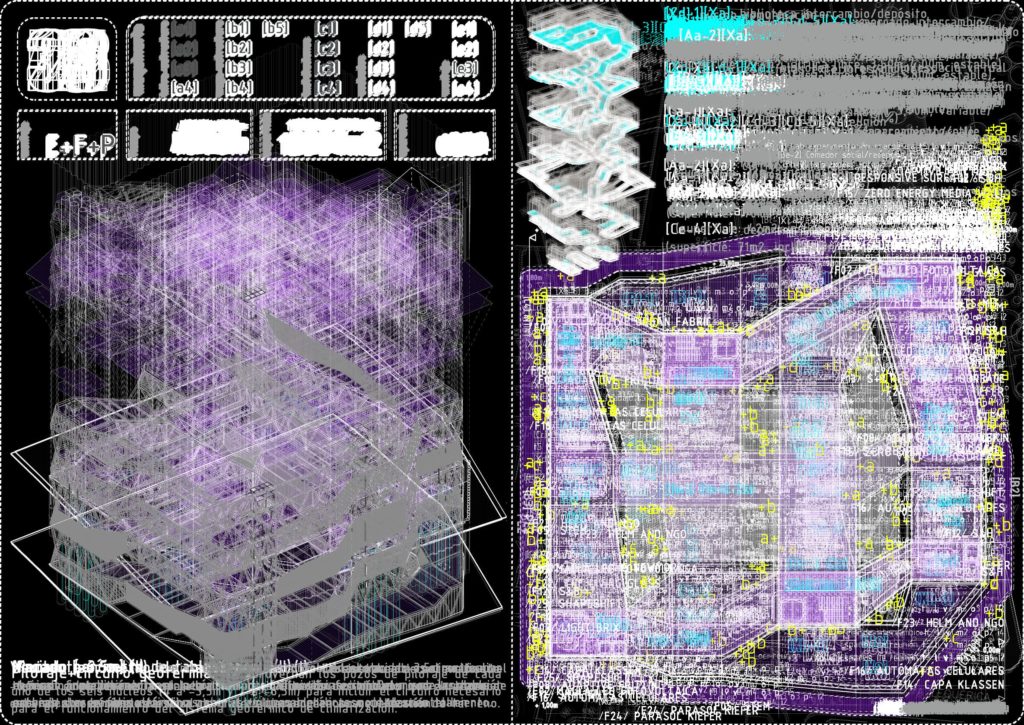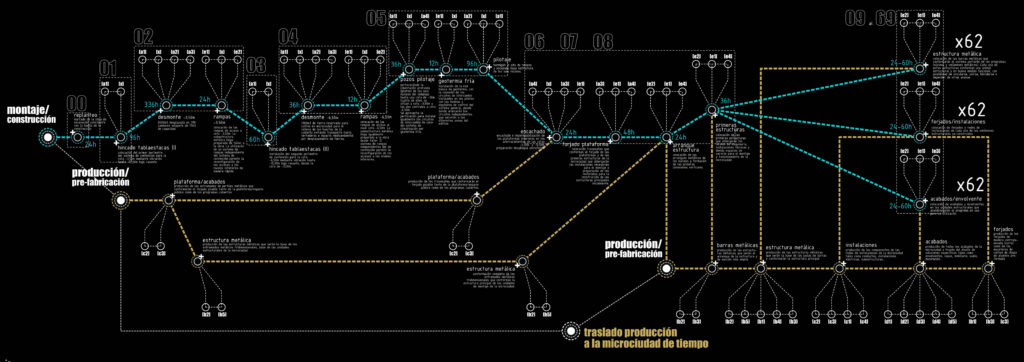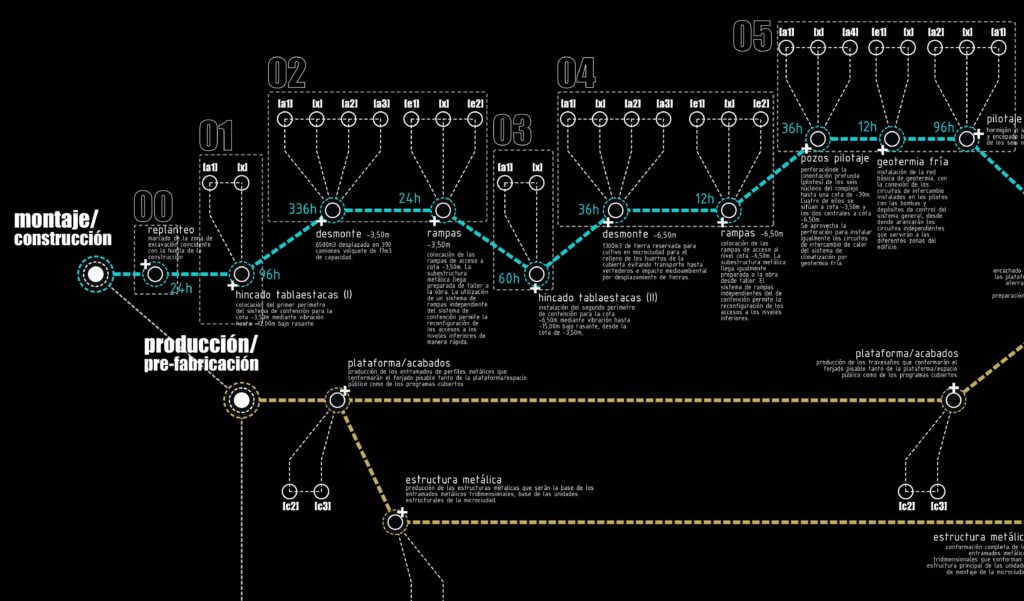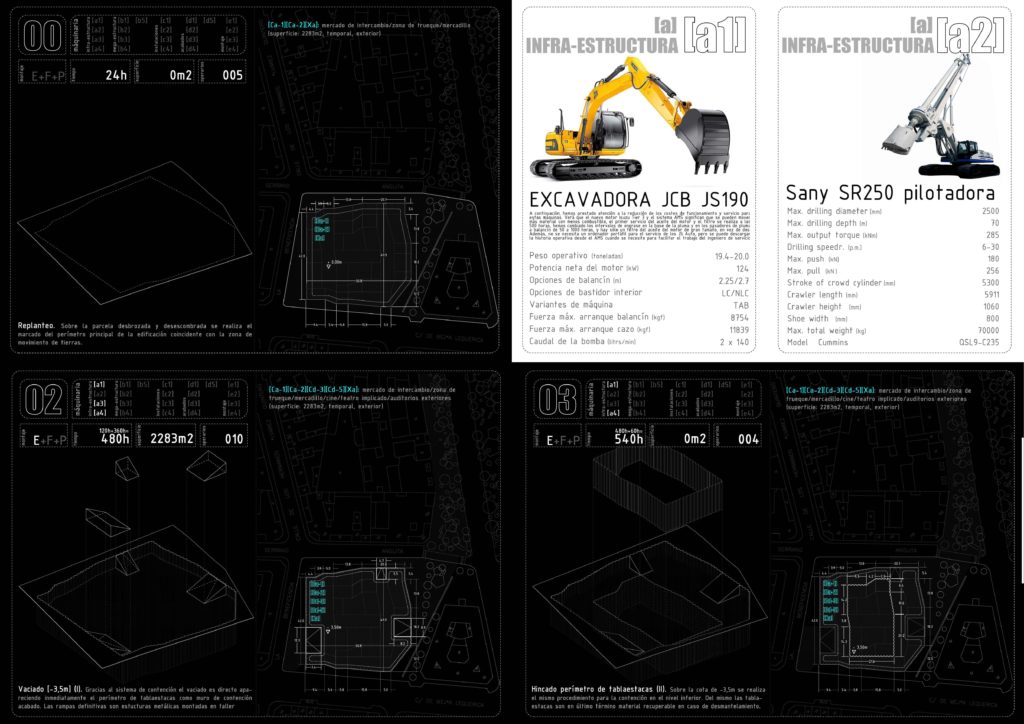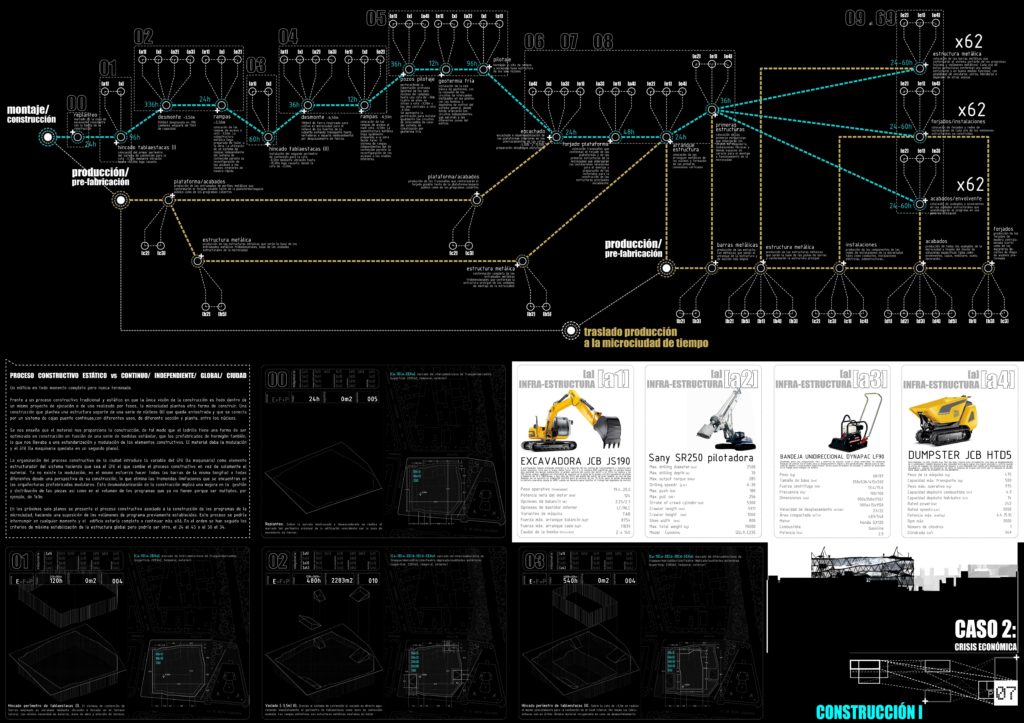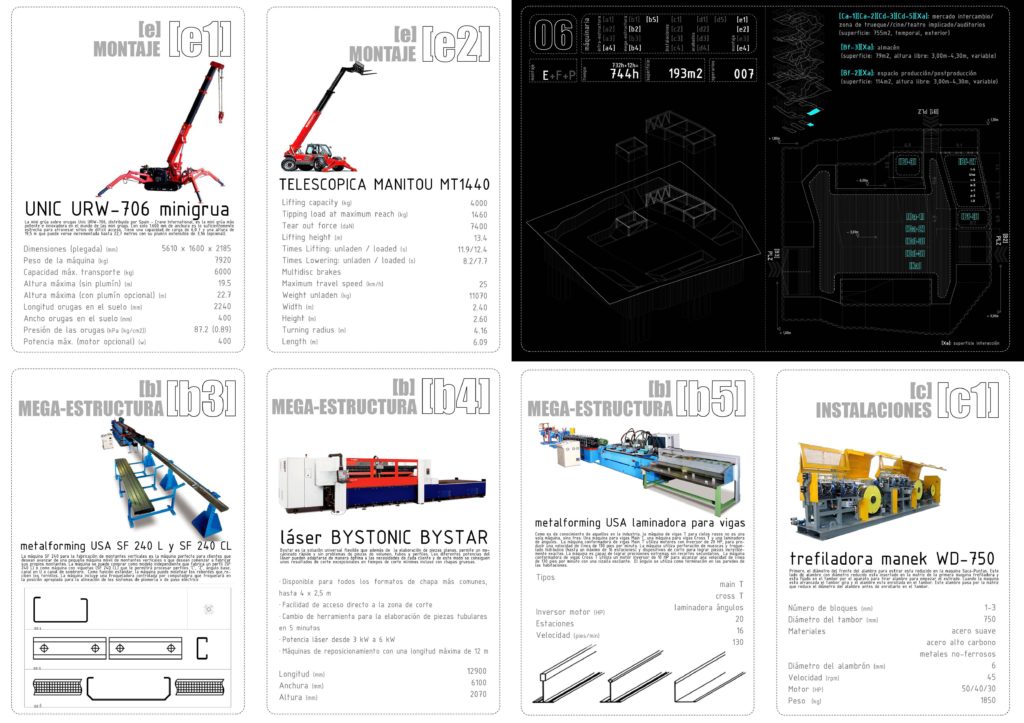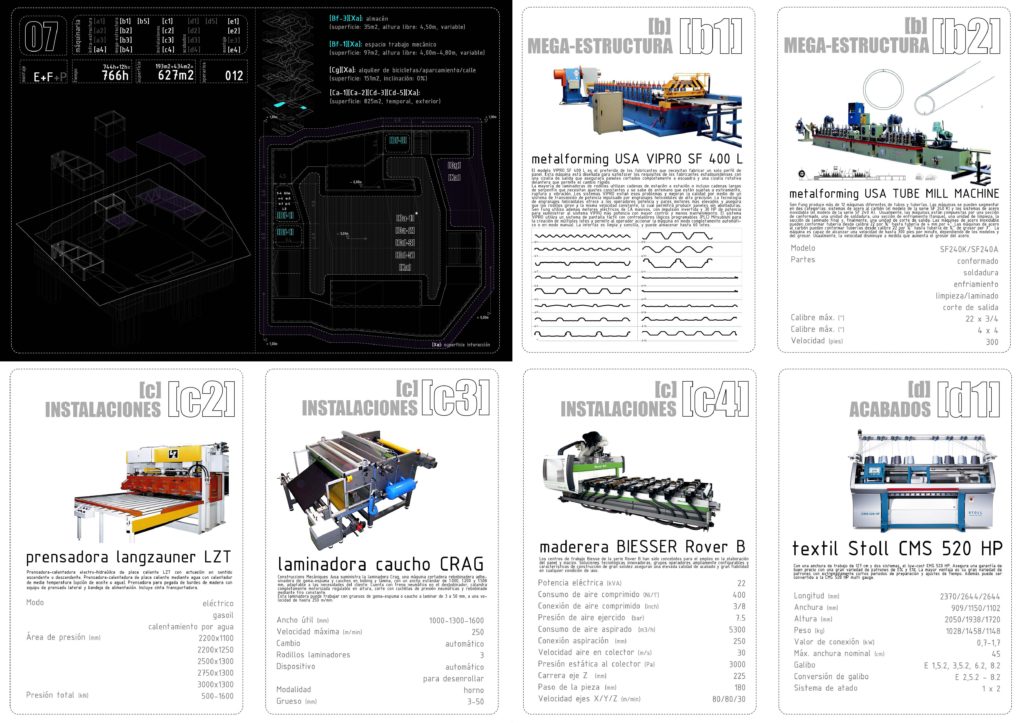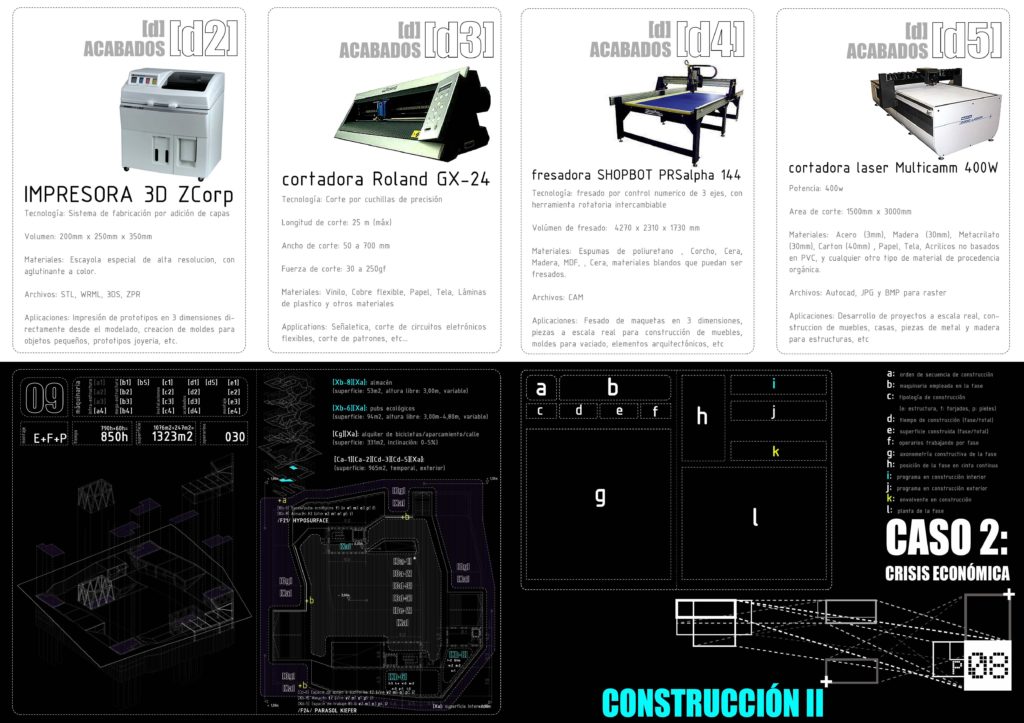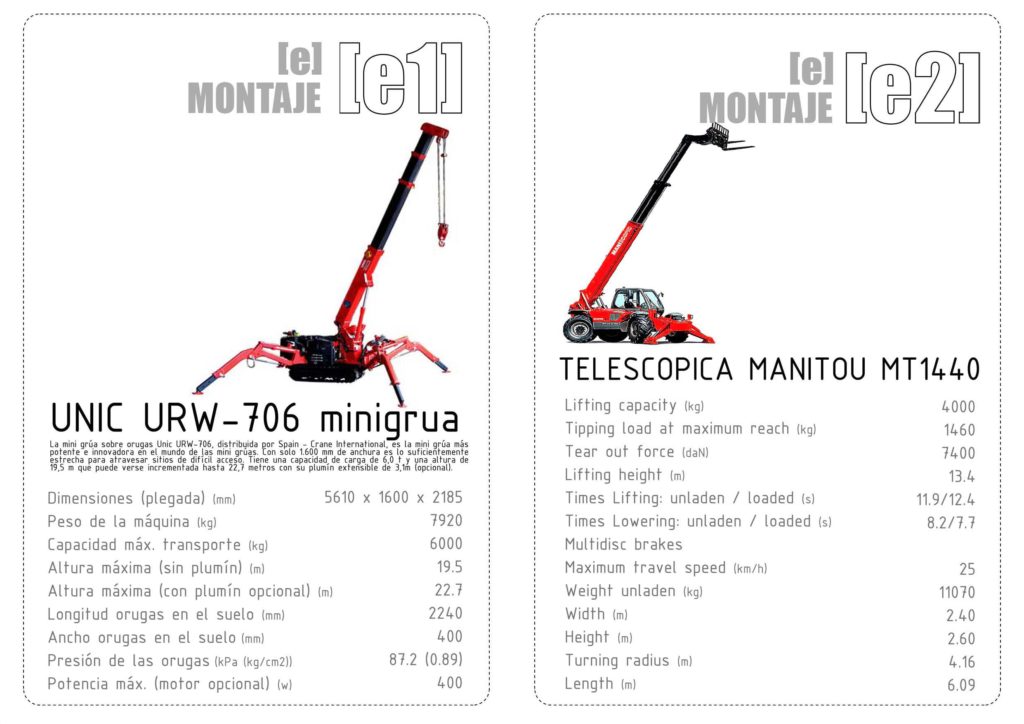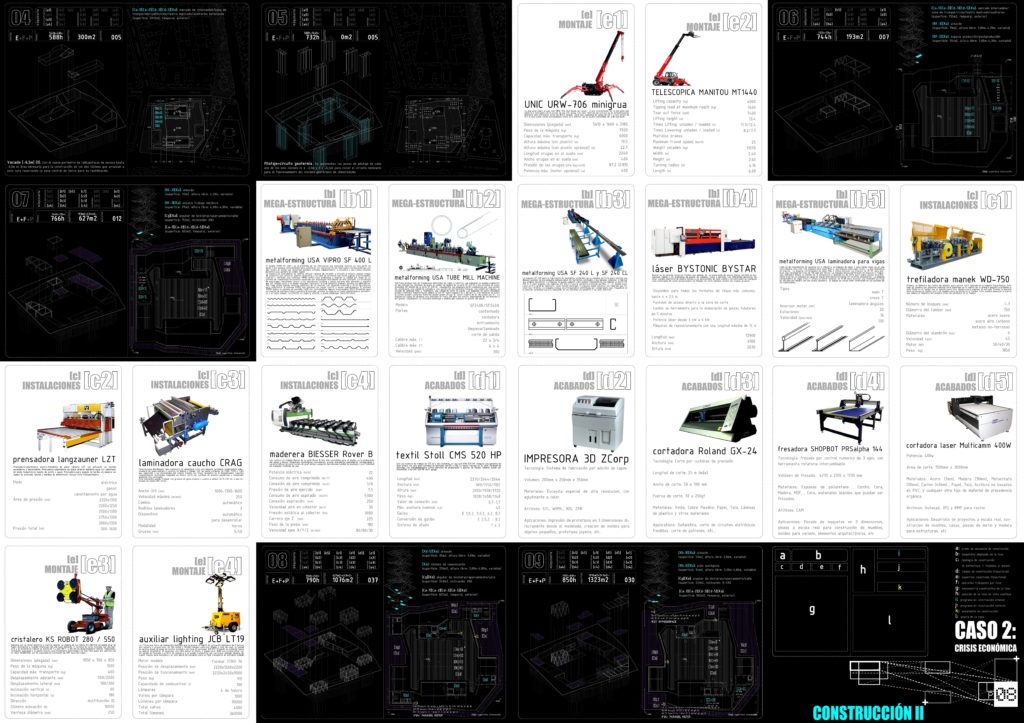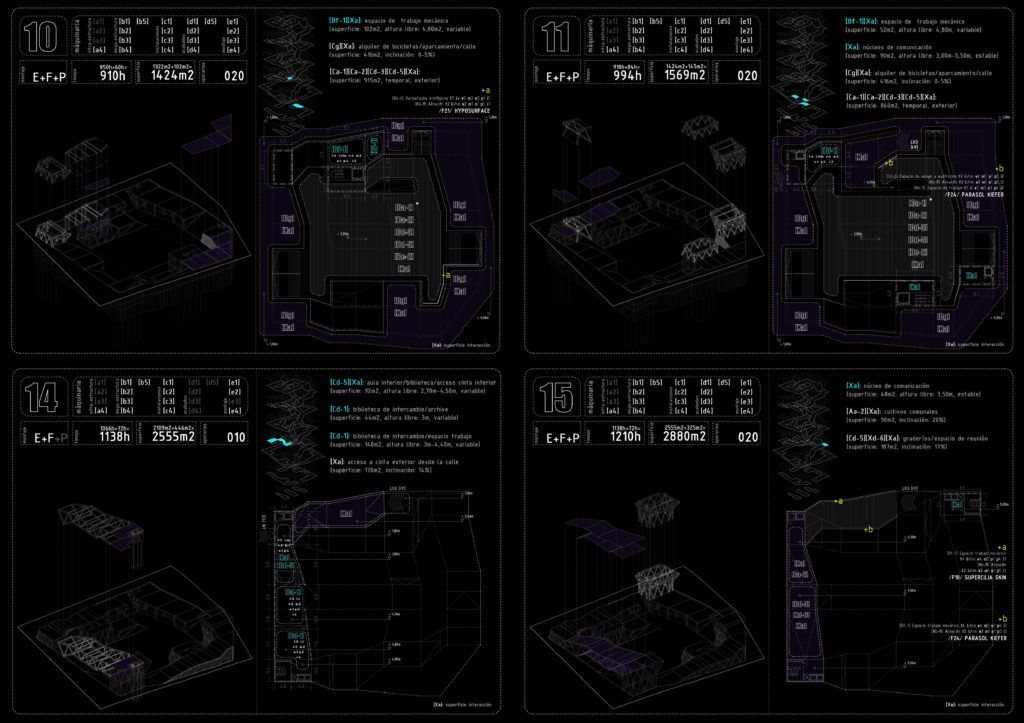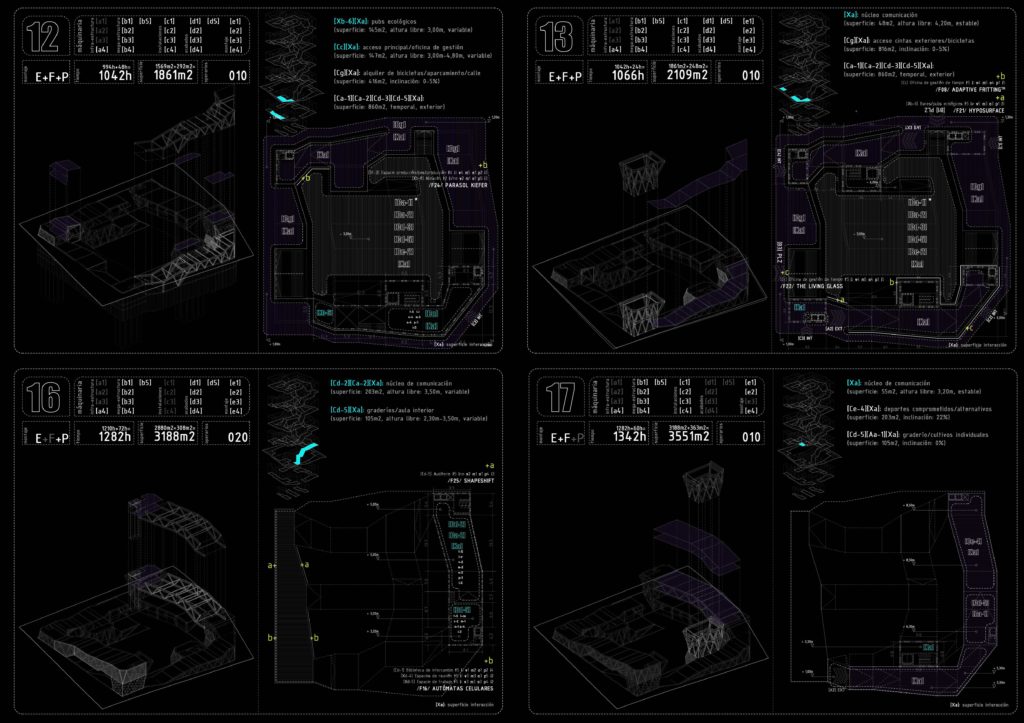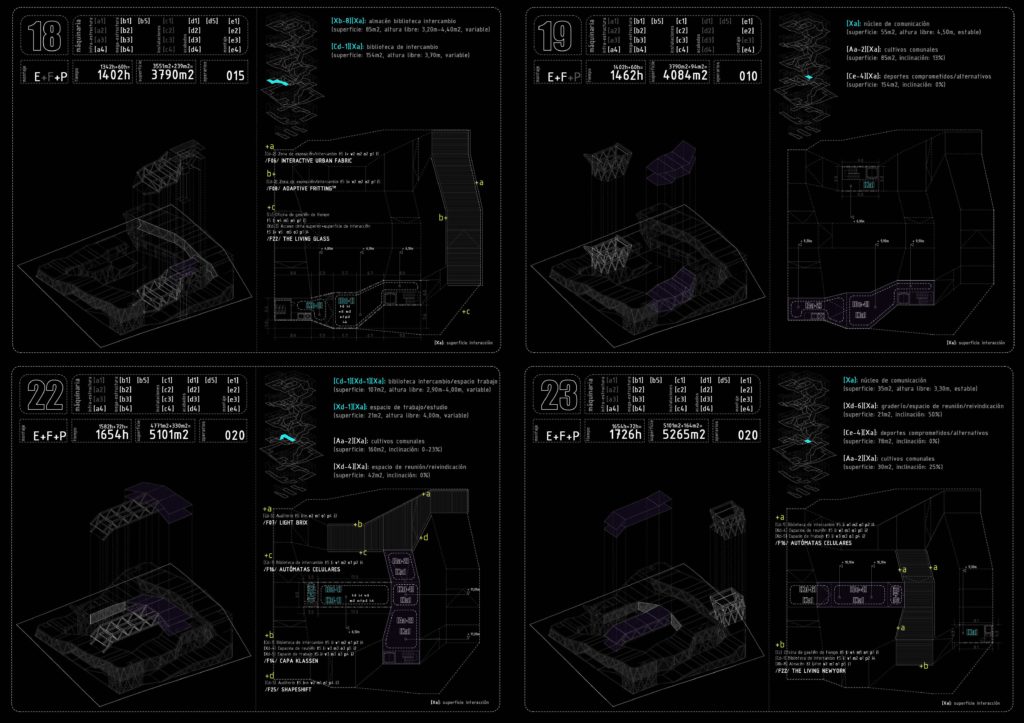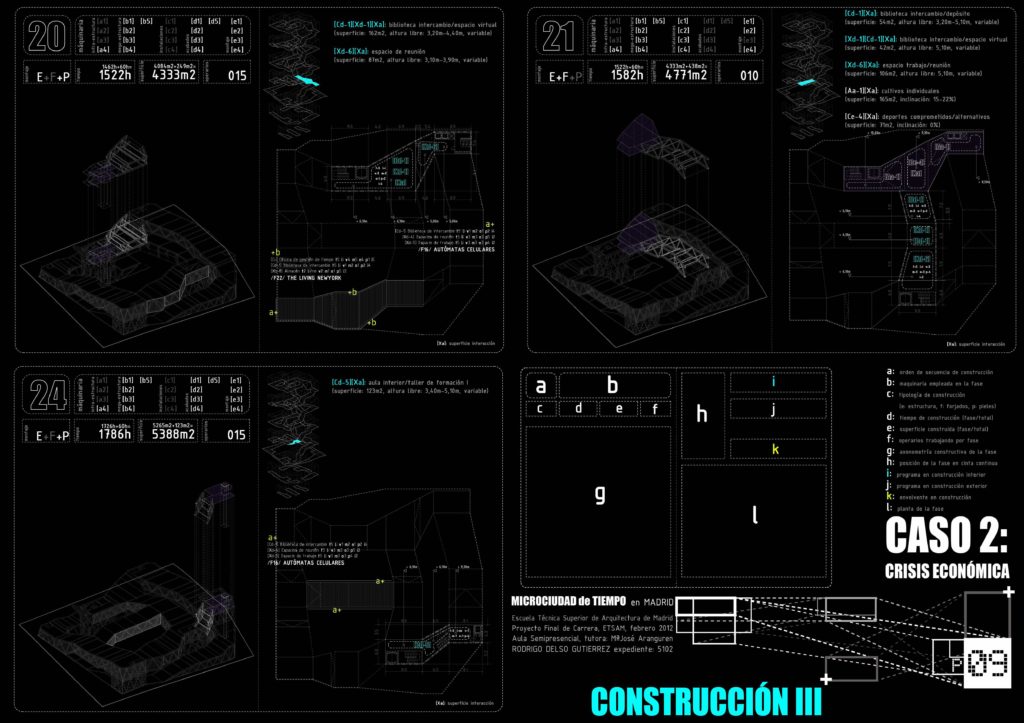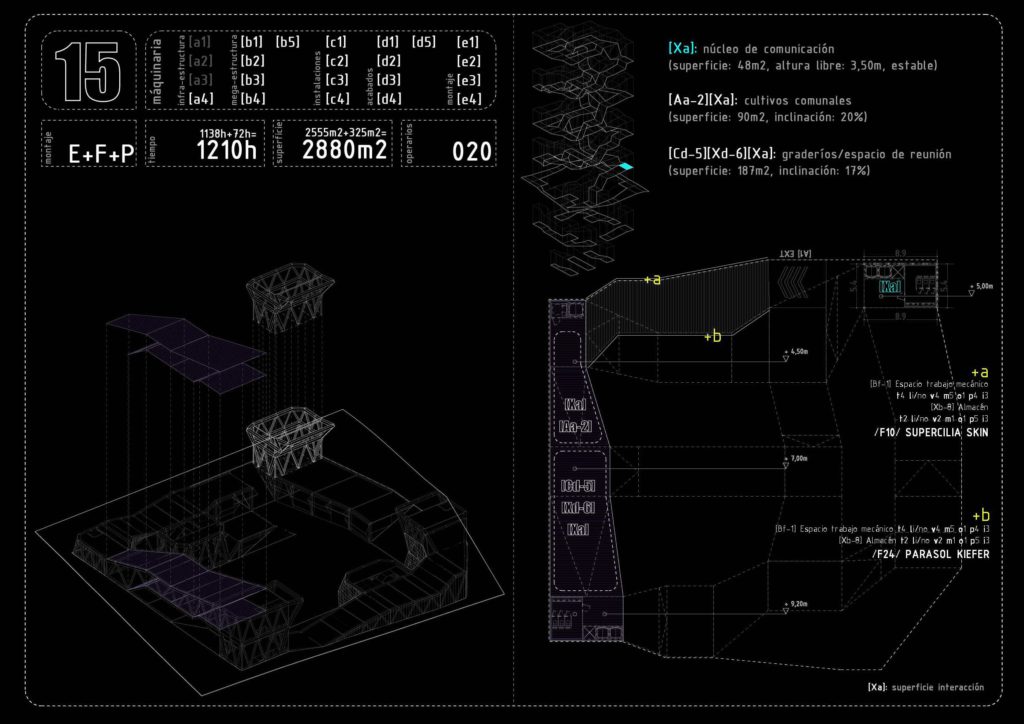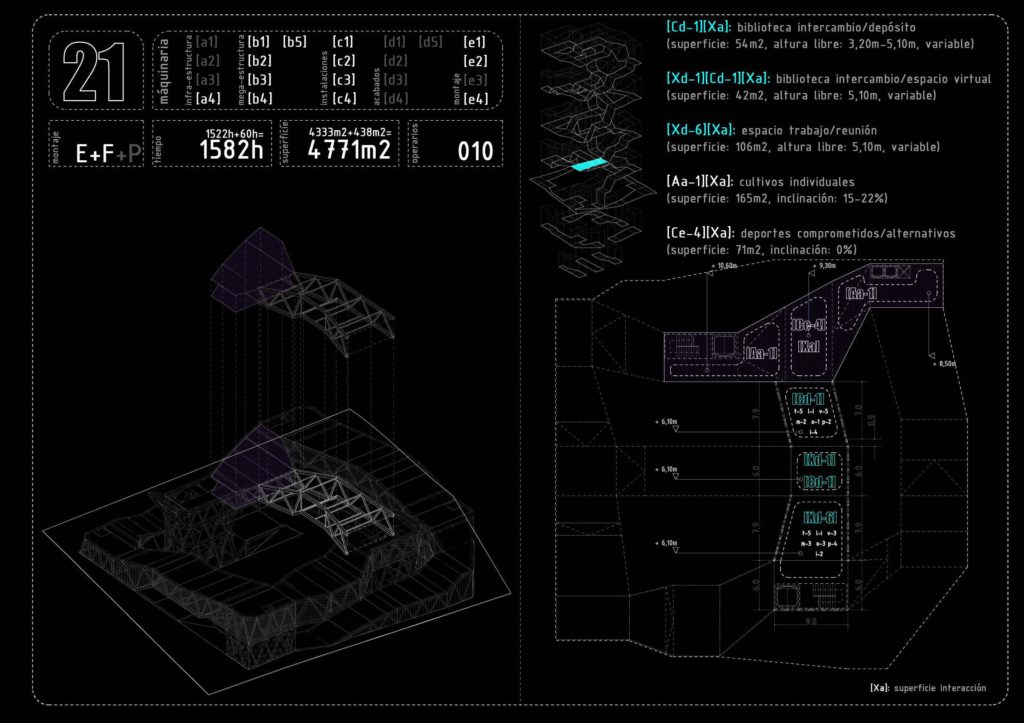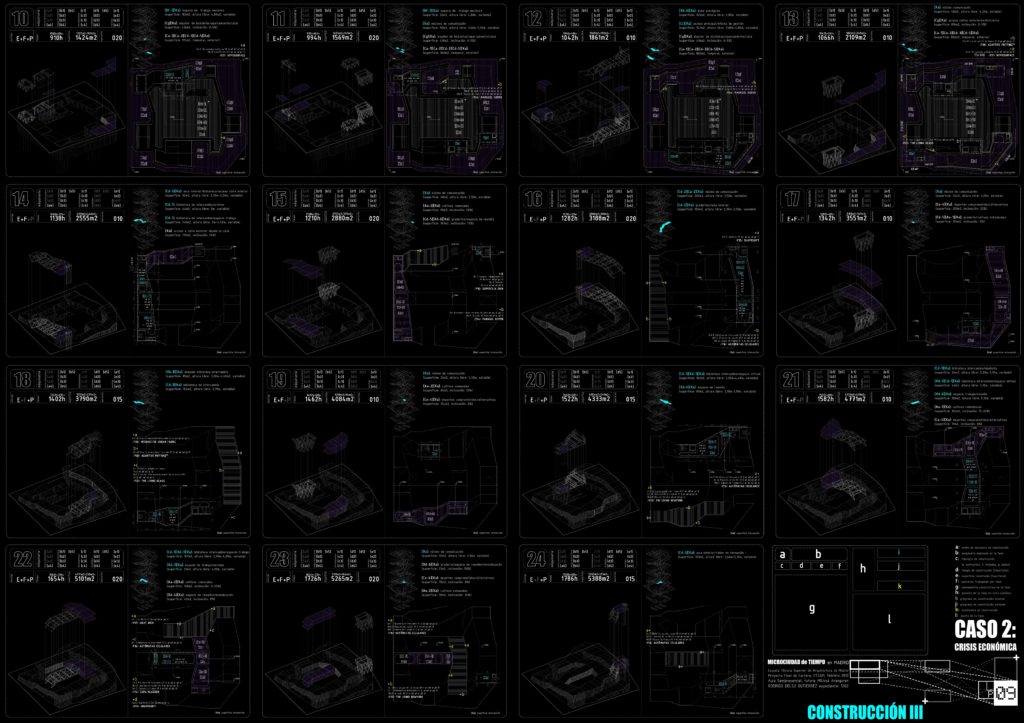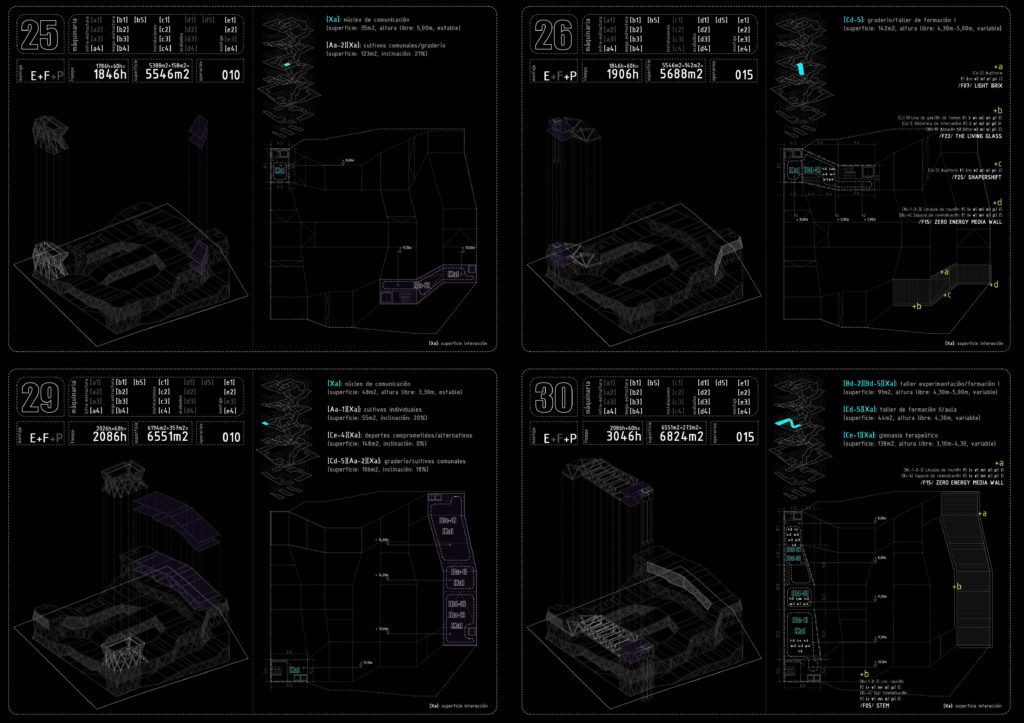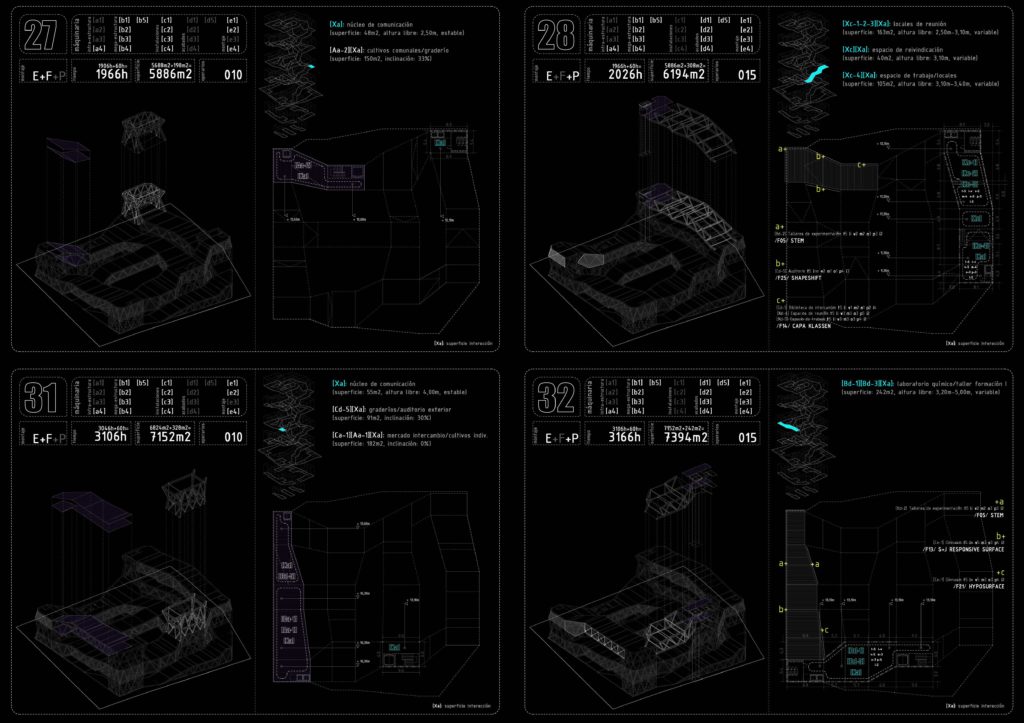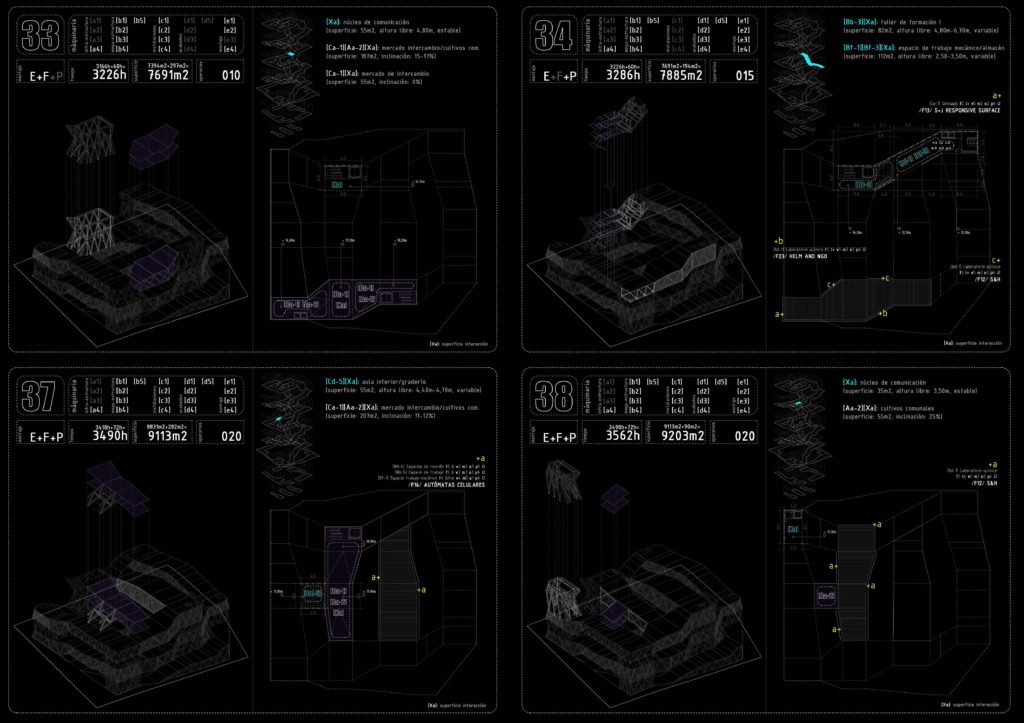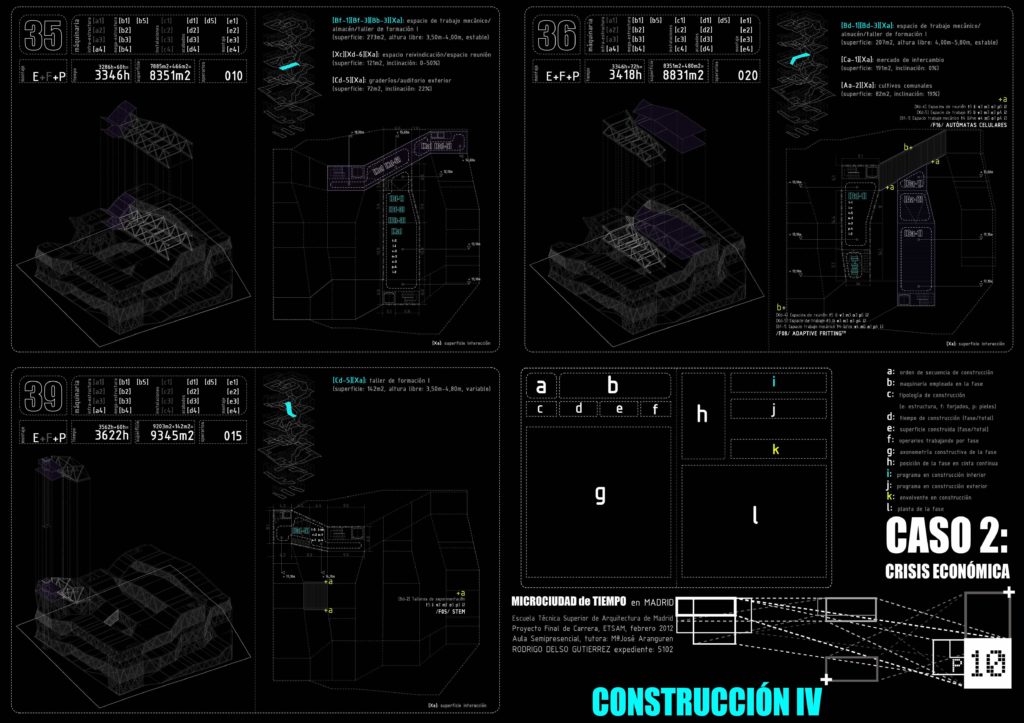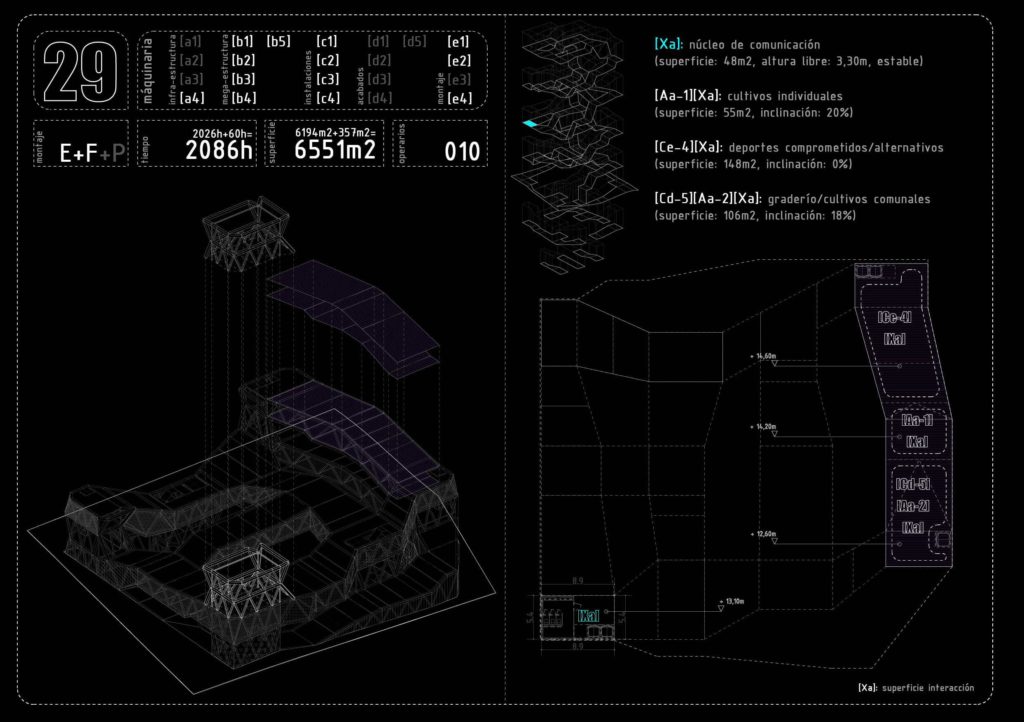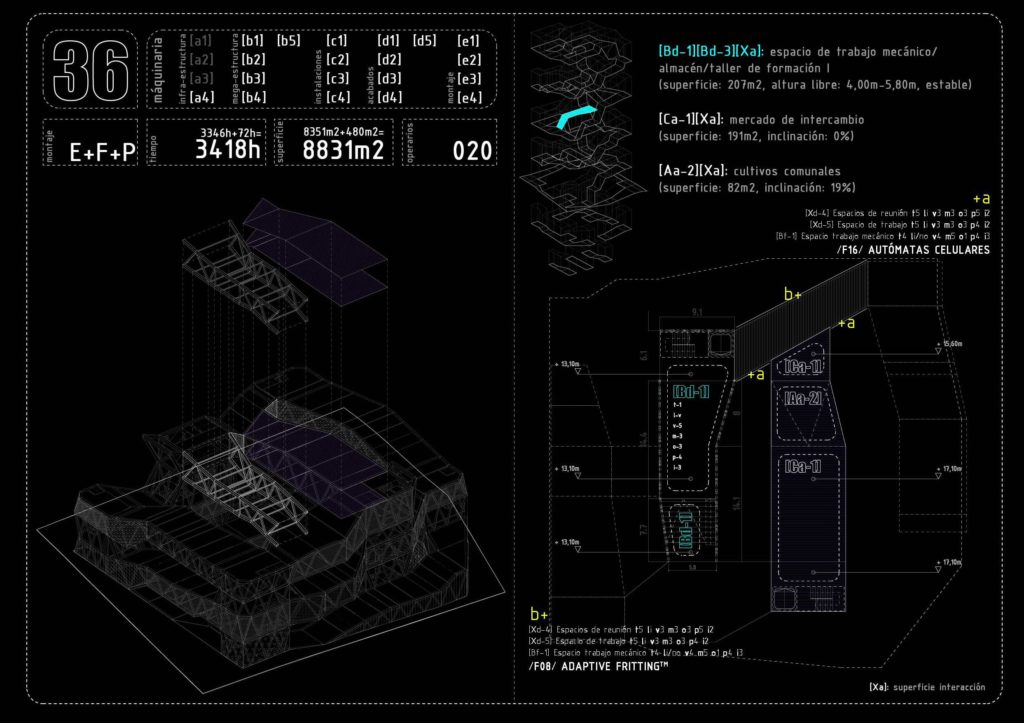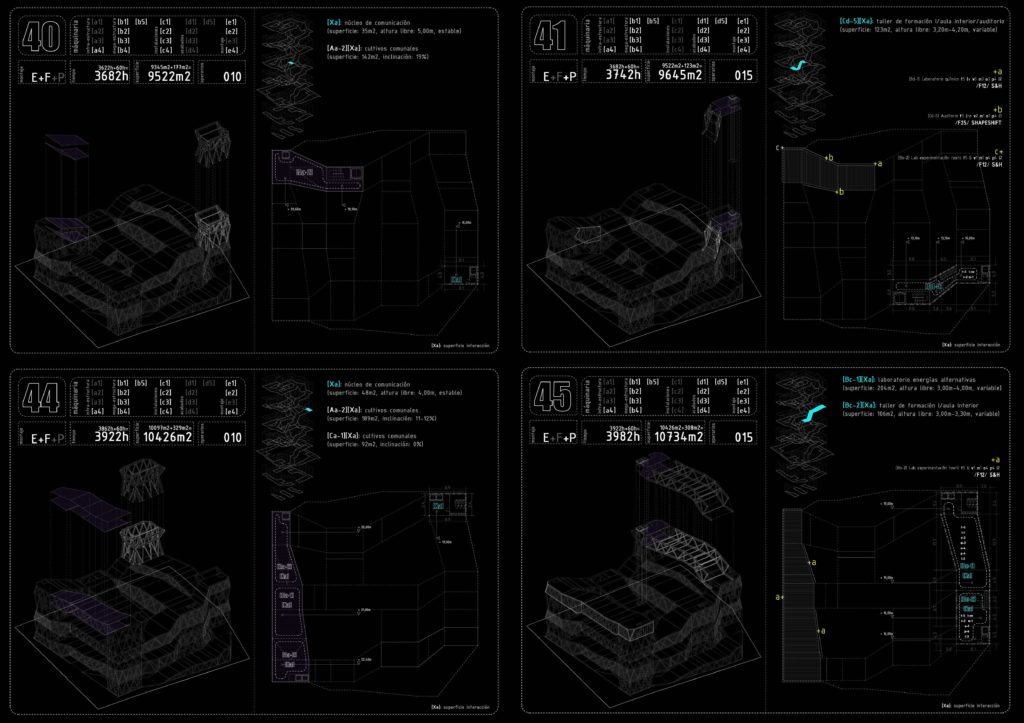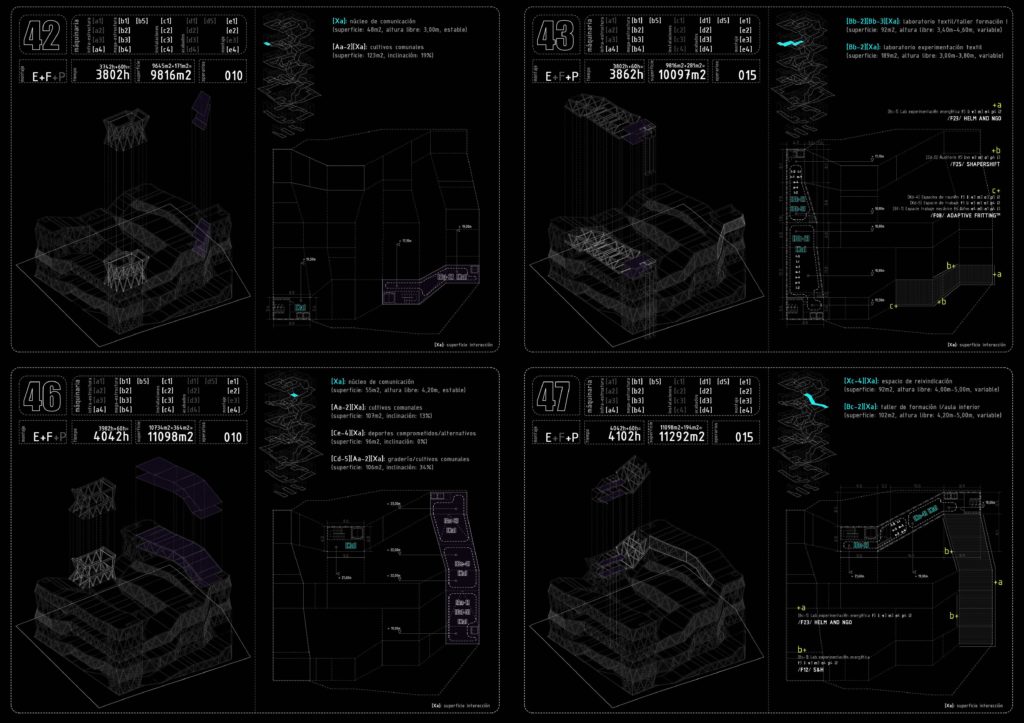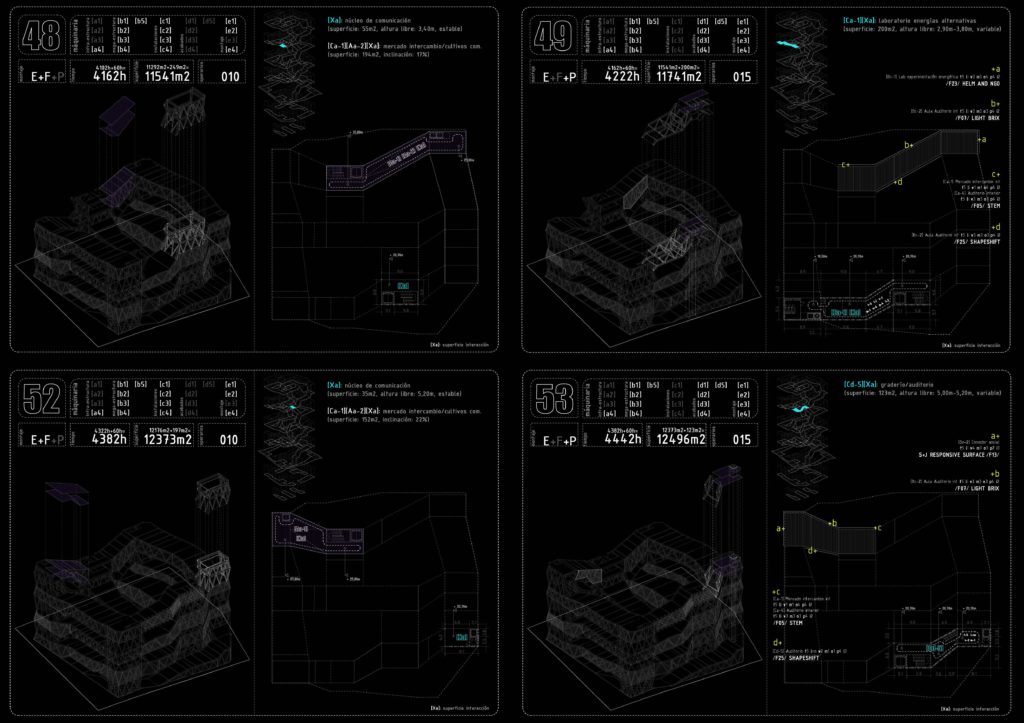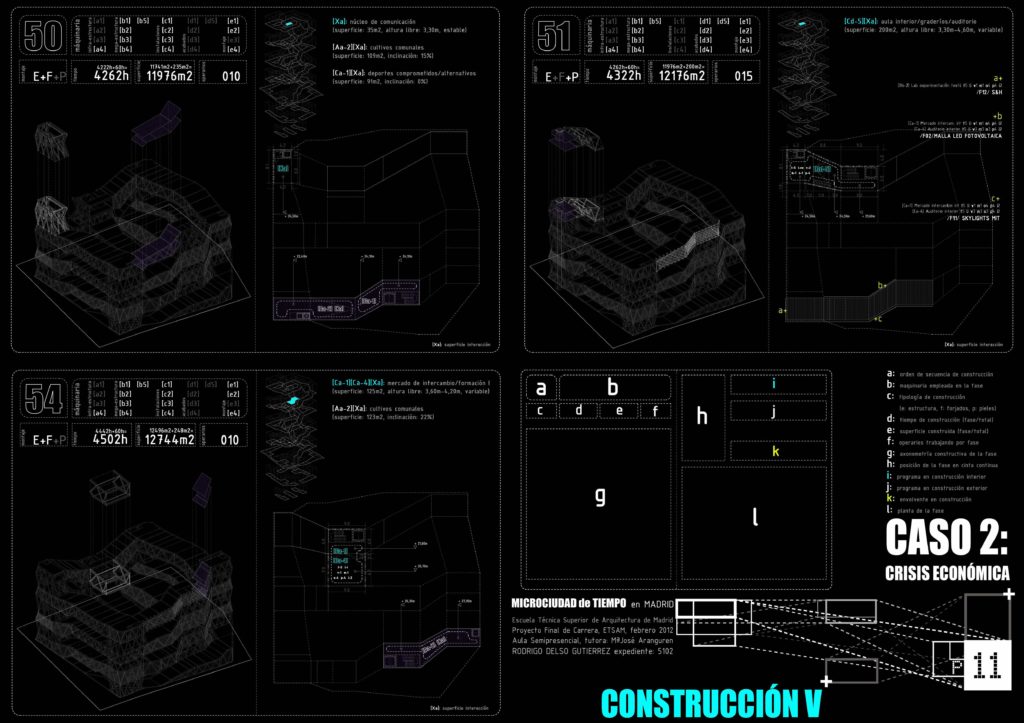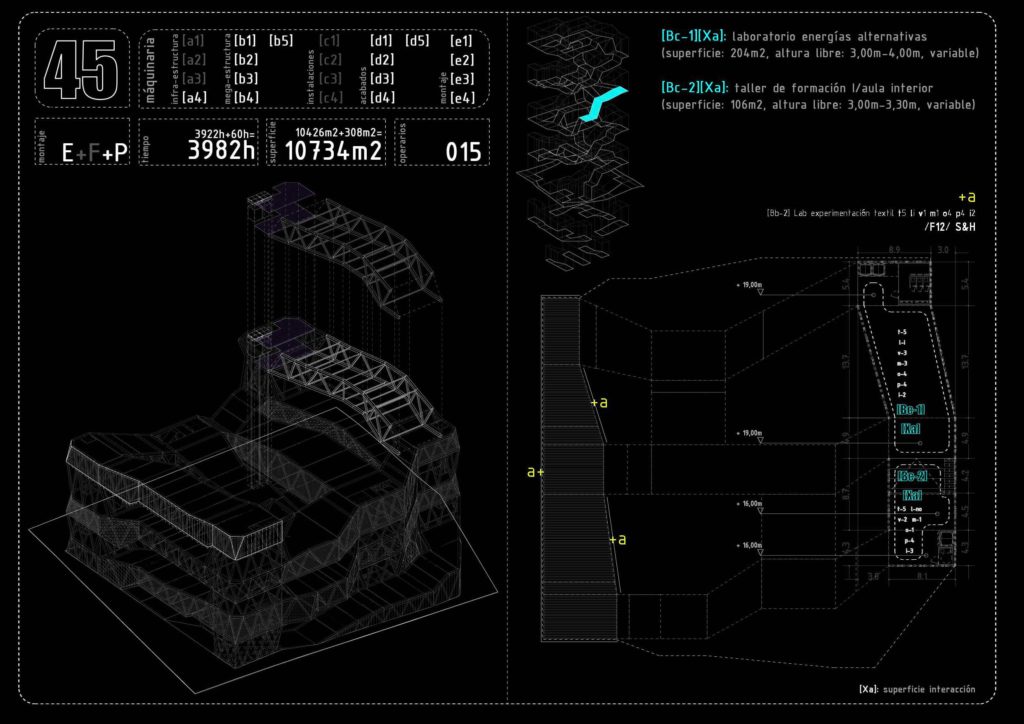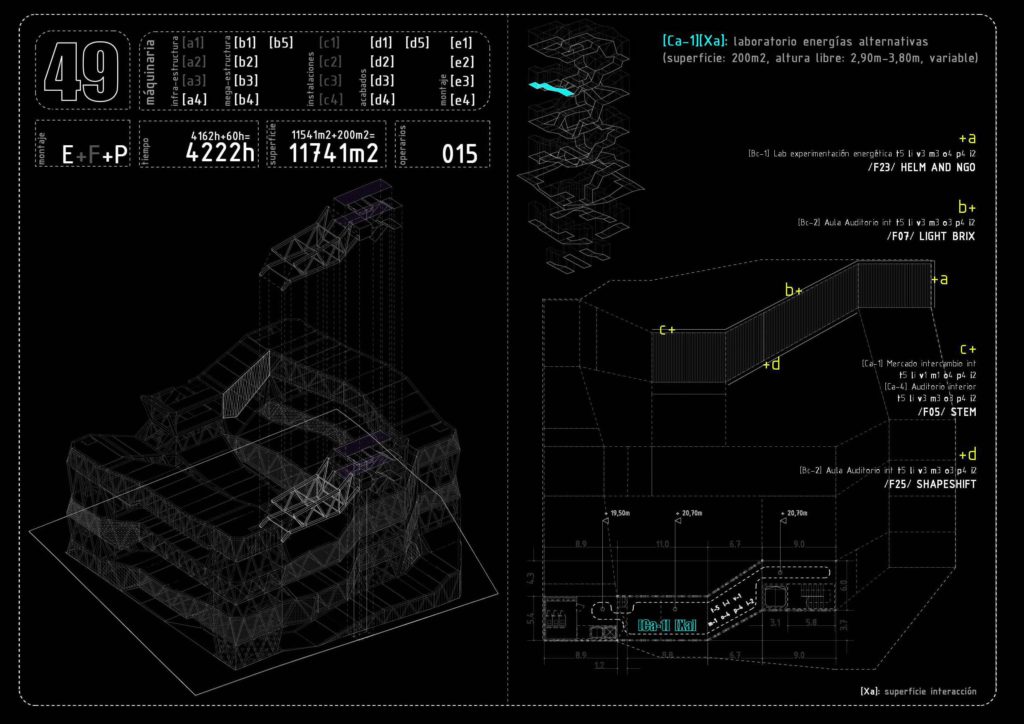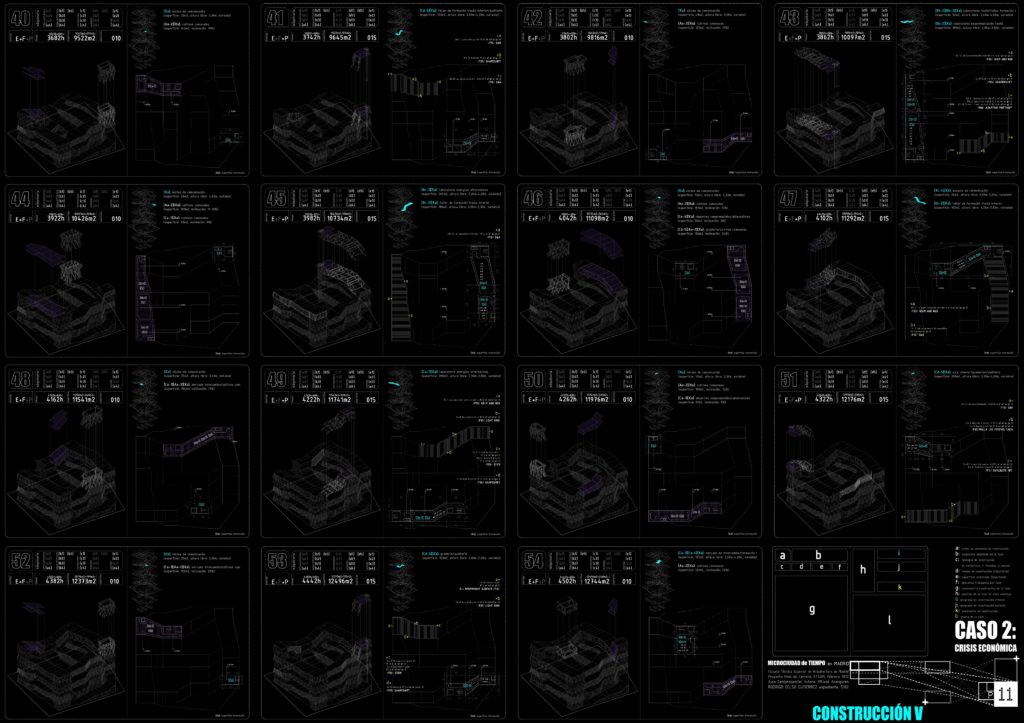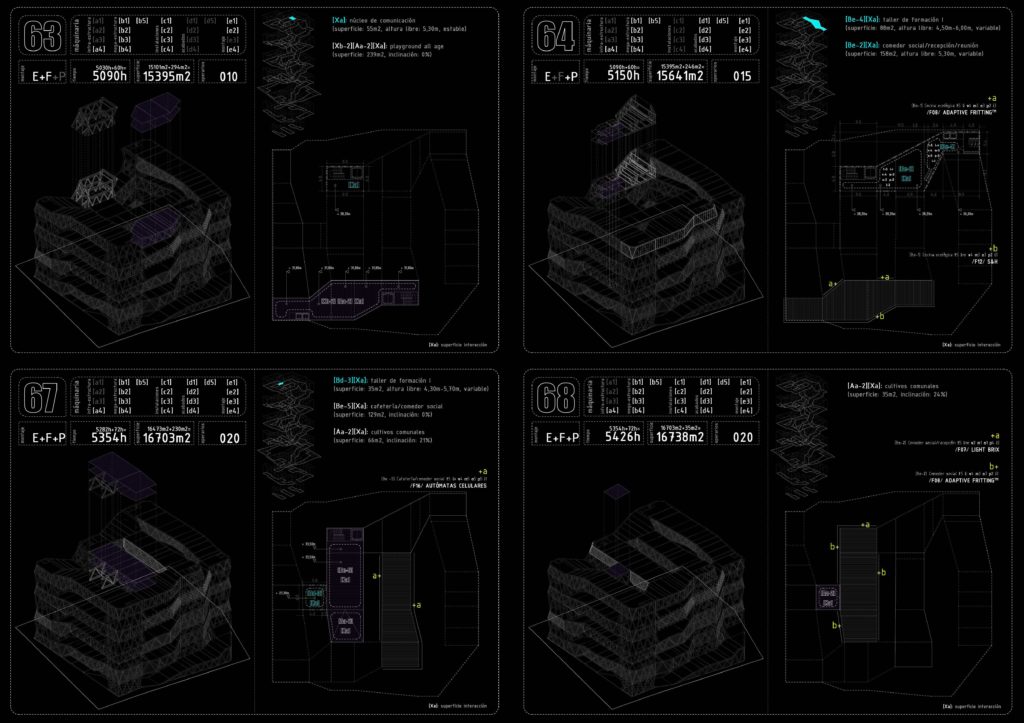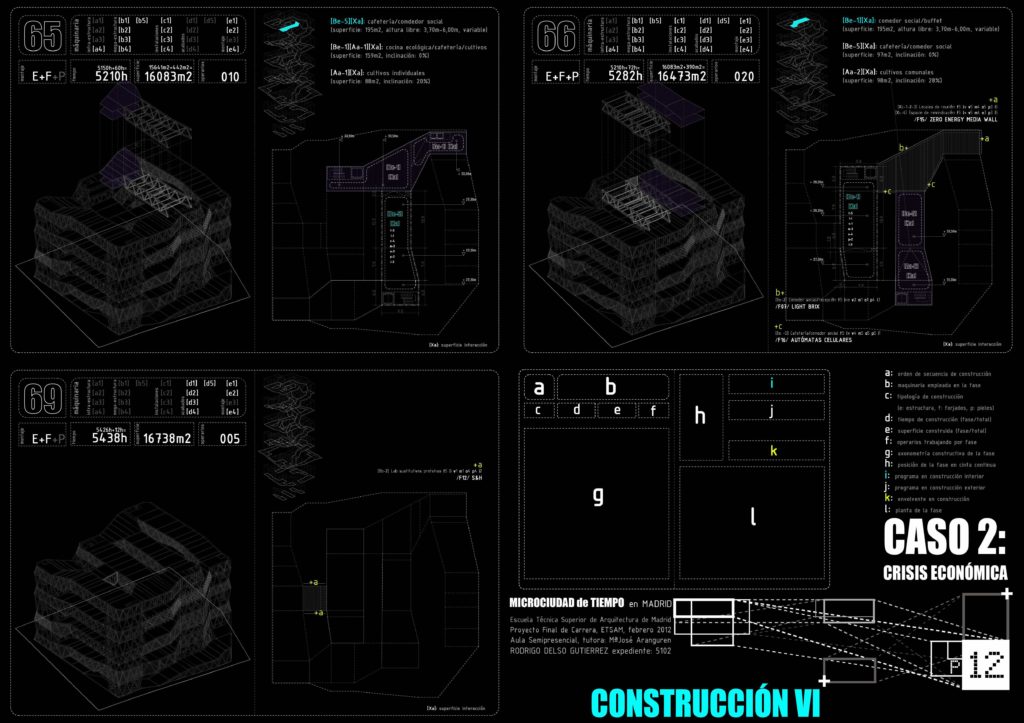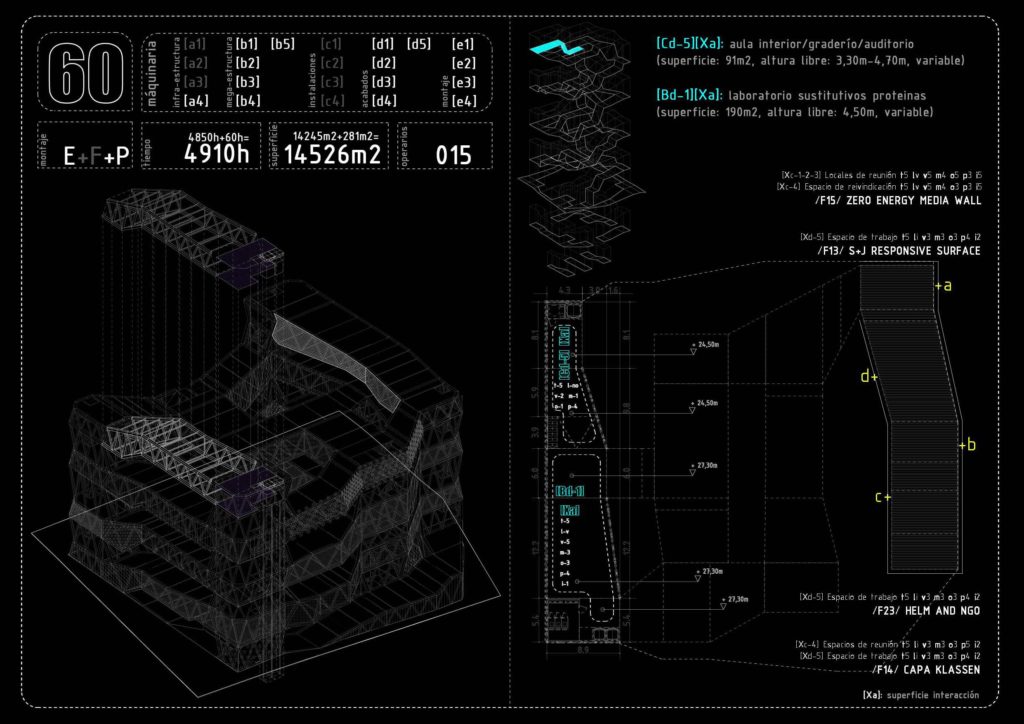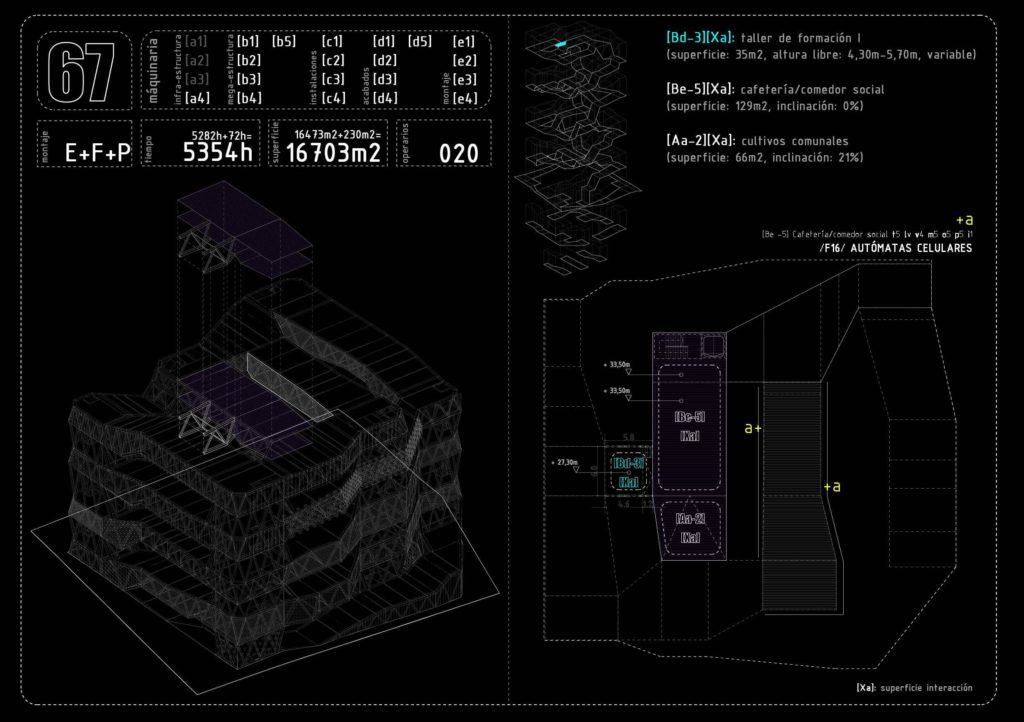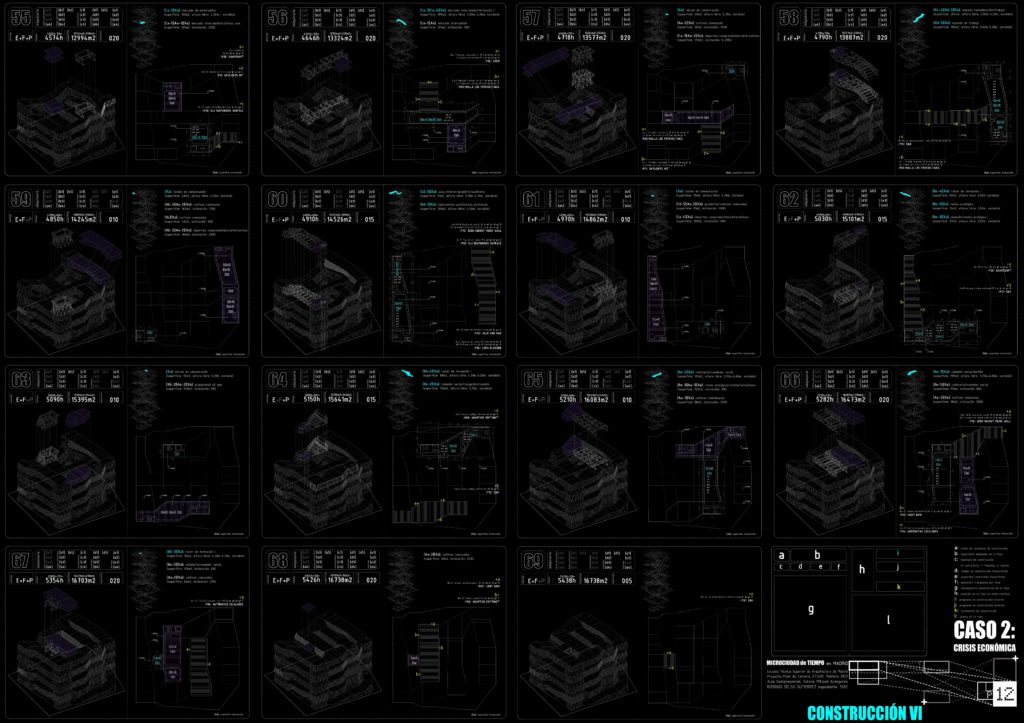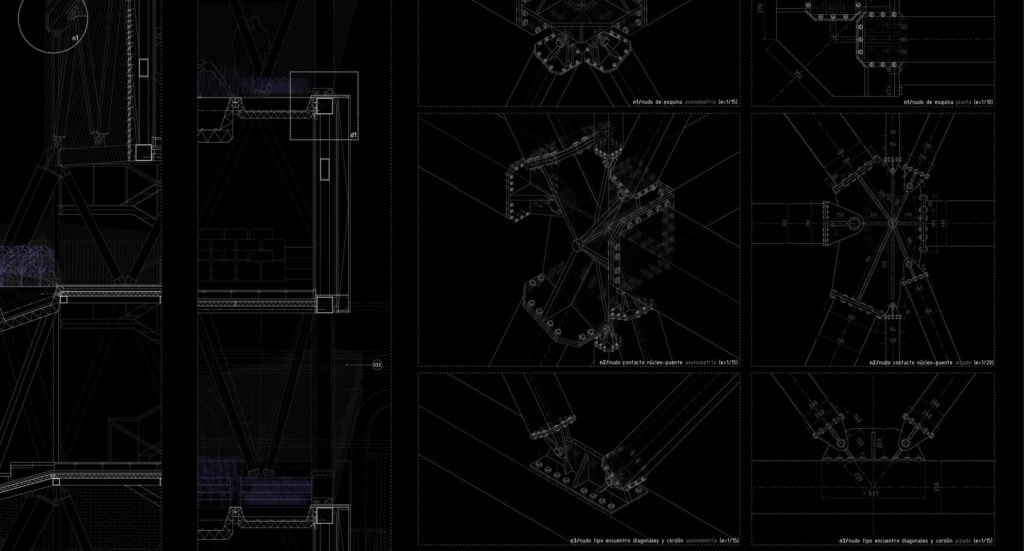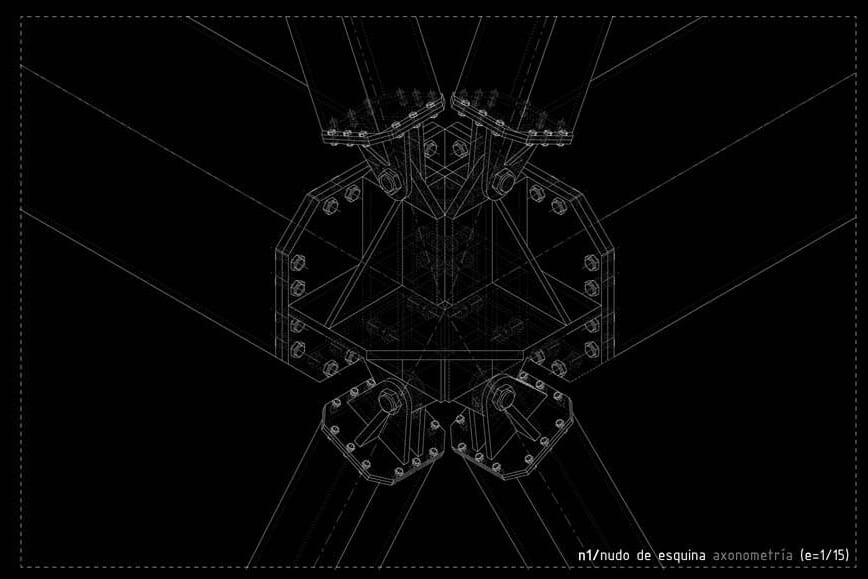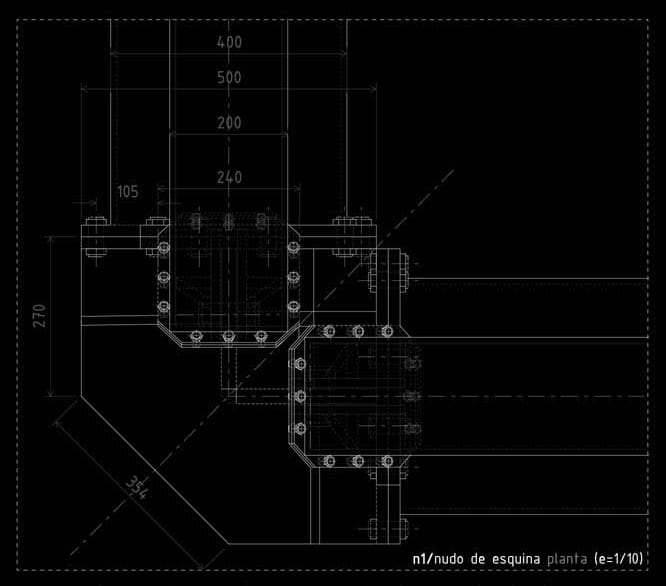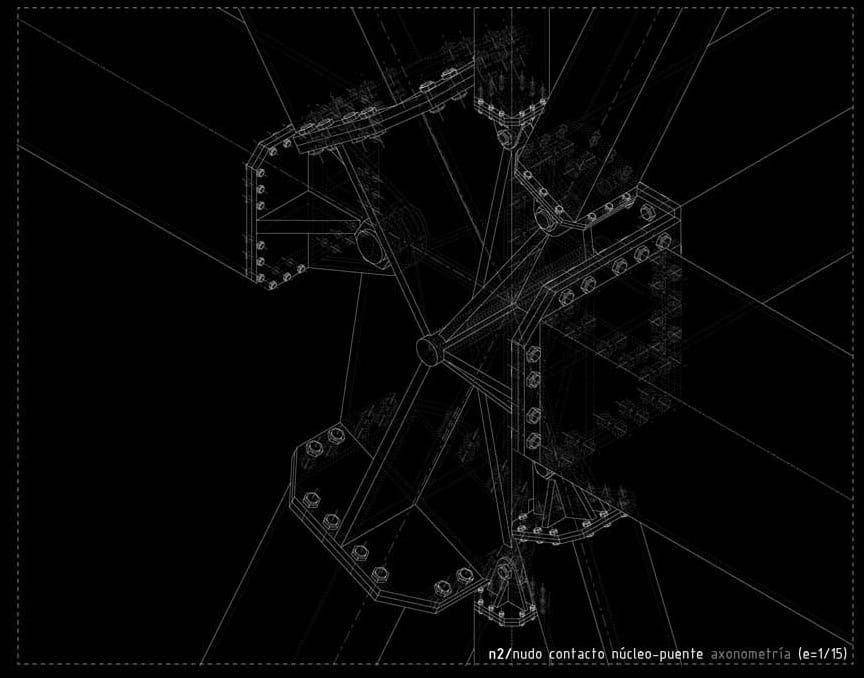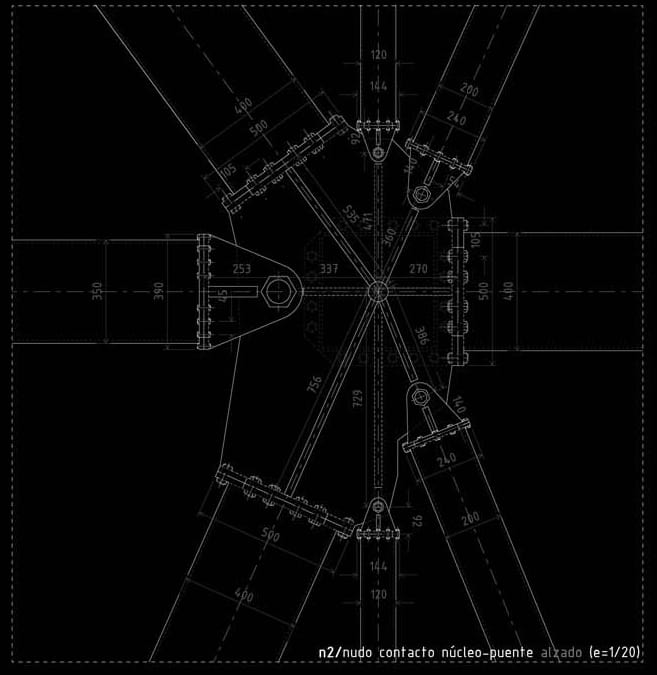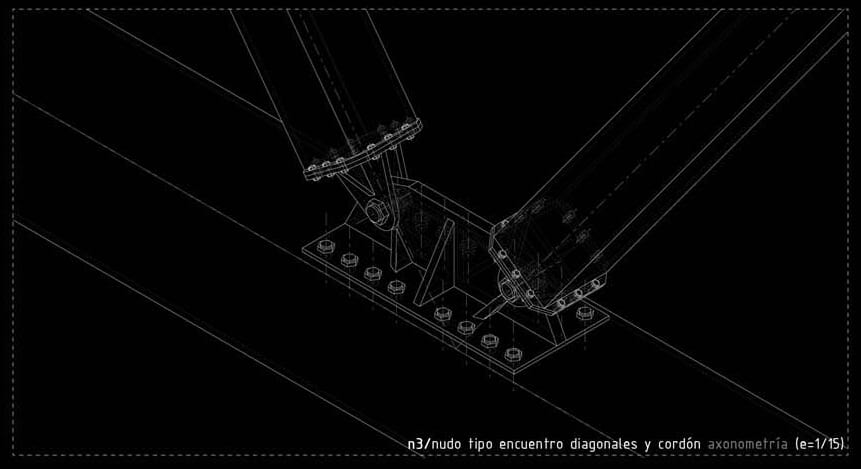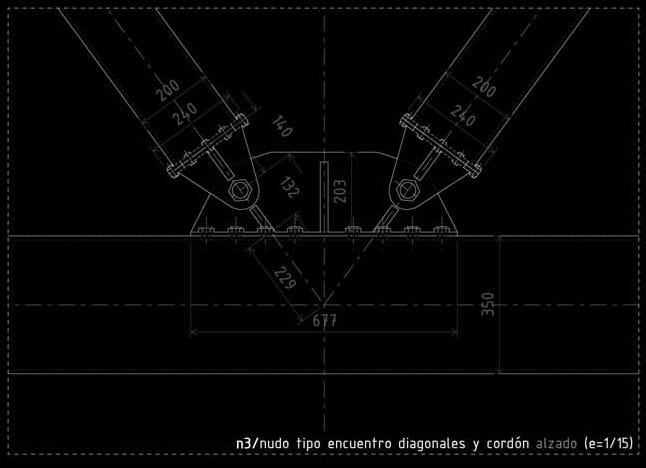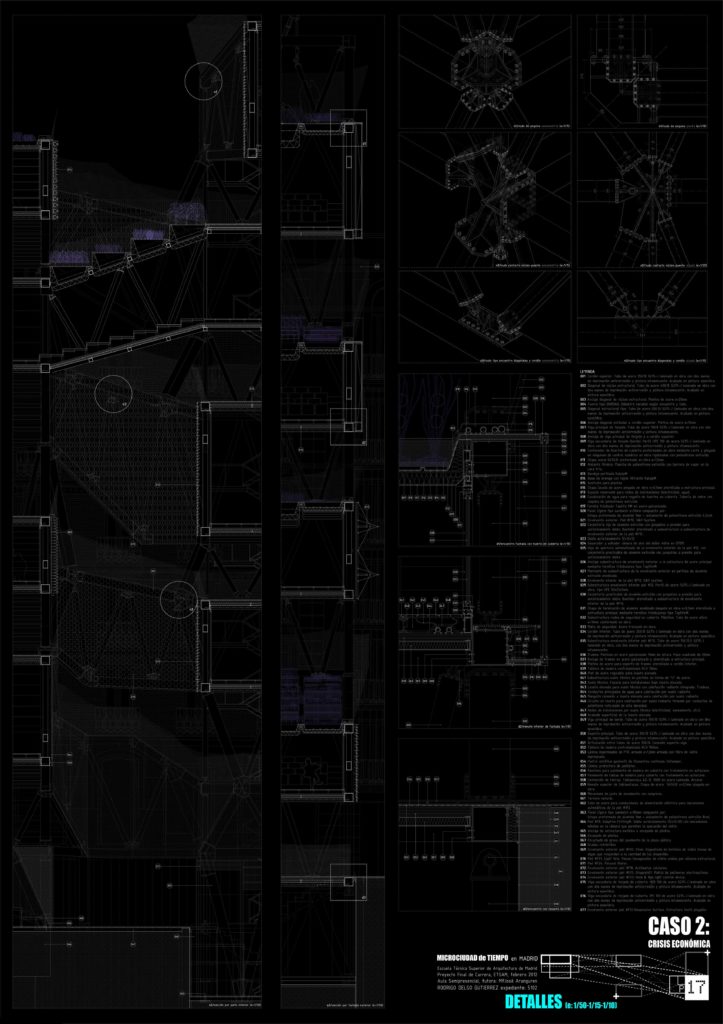Code: (12.y.GRO)
Title: Time-MicroCity Growth System
/// Authors: JARD
/// Year: 2012
/// Awards: 1st prize in the national competition Schindler ’13.
Finalist at Coam PFC competition 2012
/// Prmtrs: Diagram Translation Mutant Static Kairos Weeks 0.00 € (i) Legal Commons 99 % Visibilise Control Otherness Ad hoc Awarded Exposed
The growth system is based on an augmented notion of time that not only helps us to think the moment, the final object, the shape, the point, the partial, but the temporal, organic, topological, the multi-directional, habitable. It’s finished? Architecture is too heavy, too slow, too expensive to think it for a minimum duration of one hundred years. To think of a static architecture, standing still in a changing society at extreme speed, minute by minute, is to ignore what surrounds us. The city remains incorruptible, while citizens change their position every second.
| SEE MORE |
“The passage of time, the speed of the seasons, the climate changes, the increased intelligence and the aging of the body are usually compensated by architecture, rather than used as constituent parts of a menu to expand the value and usefulness of human life.”
– Cedric Prize
The Time-MicroCity does not believe in the status quo and brings lightness, mutability, speed, deformity to the process of architecture. All the steps are specific and global, may change, may be other or even exist. All are conditions.
The project of the Time-MicroCity presents a system of endless problems and solutions in which each, all, choose the information they want to receive and the parameters that want to be considered for decision making. Its aim is to reduce the position taken by the system to the minimum part, losing the overall system capacity to impose regulations. The global system is a mere distributor of information, it does not even classify it, it just simply produces a mode of living avoiding the risk of imposing rules that would delimit it. In the case of architecture it is especially dramatic because of its slowness to adapt to change and for its deliberate character of perpetuity.
This reduction is based on the most basic element of the system and, therefore, more flexible, more individualized, more dynamic, more open, more mutant, the fastest… The most important decision is the reduction of decision making to every particular time, to the specific need, the basic unit, introducing the fastest, most efficient and specific response time.
It is not a system for solutions and problems, it is a system to critically consider all systems solutions and problems.
| SEE LESS |
